Growing Blog
Mushroom Yield and Biological Efficiency
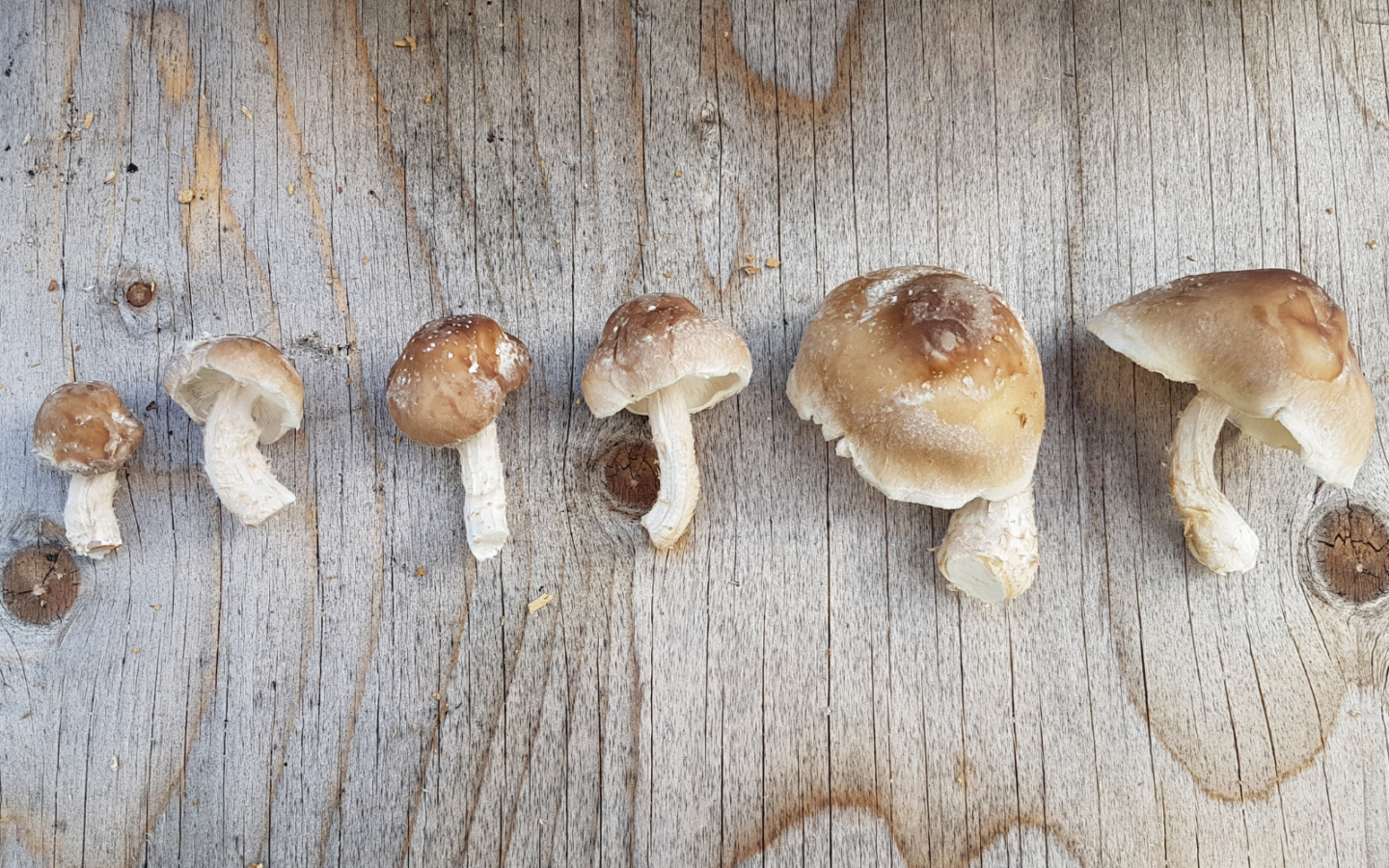
Mushroom yield and biological efficiency are important parameters that need to be understood and optimized by the mushroom cultivator.
When you first start out growing mushrooms, you might not be all that concerned about how many mushrooms you get.
At first, just getting some nice looking fruits is a huge success!
But as you get more proficient at growing mushrooms- and especially if you want to turn your hobby into a business– you should be increasingly concerned about how many mushrooms you can grow with the substrate you have.
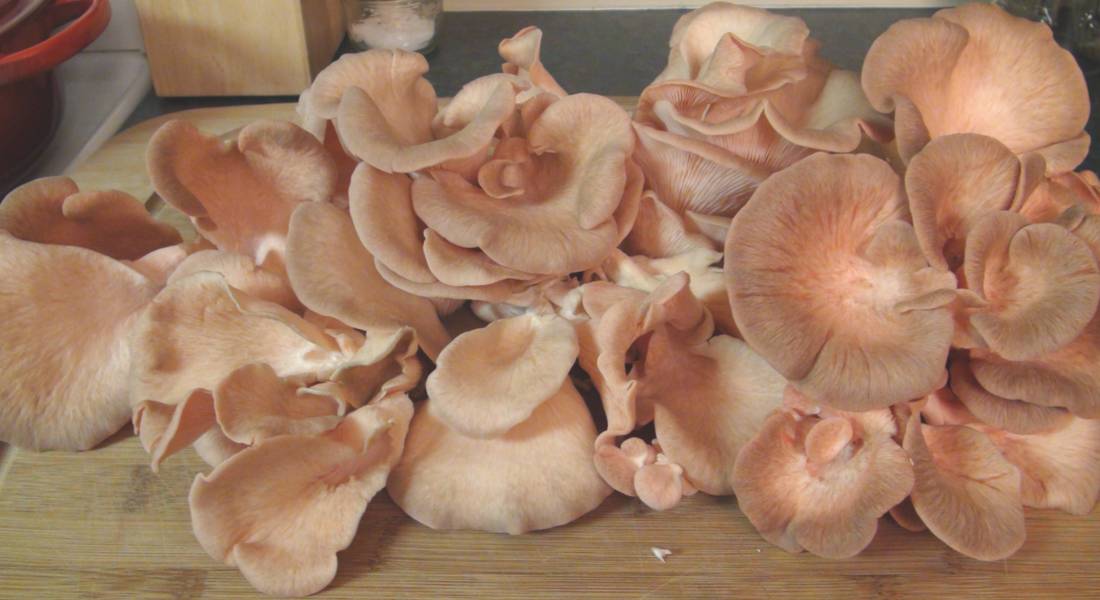
Pink Oyster mushrooms after harvest, ready for the frying pan!
What is Mushroom Yield?
Put simply, mushroom yield is the amount of fresh mushrooms you can produce with your space, substrate and other constraints. The larger your yield, the more cost effective your grow.
Yield should be determined using the total weight of fresh mushrooms from all flushes until the substrate block is completely spent. You may find that the yield for your mushrooms can vary wildly between flushes, which are why using the total yield is a better indicator of performance.
That being said, it is sometimes better to go for a larger yield on the first flush, and future flushes may have diminishing returns.
What is Biological Efficiency?
Biological efficiency, often referred to as BE, is simply a way to calculate the effectiveness of a mushroom strain and substrate combination when growing mushrooms. It is a measure that was originally developed by the button mushroom industry in order to grade certain strains of mushrooms.
By definition:, 100% biological efficiency occurs when 1 lb of fresh mushrooms is harvested from 1 lb of dry substrate, over multiple flushes.
BE=(weight of harvest / weight of dry substrate)x100%
Because the calculation uses the weight of dry substrate, it is possible- and actually quite common – to achieve a biological efficiency greater than 100%.
The calculation uses the weight of all mushrooms harvested from a substrate over multiple flushes.
The fact that the calculation uses the dry weight of the substrate throws many growers off, since much of the weight of a fruiting block or straw log will be water.
Usually it easier to weigh your fruiting container after it has been inoculated and compare that number to weight of fresh mushrooms harvested.
Although this is not technically “biological efficiency”, using the “wet-weight” it is still a useful measure for mushroom growers to quantify the efficiency of their grows.
An Example of Calculating Biological Efficieny
Let’s say that you are able to harvest 2lbs of King Oyster mushrooms from a 5lb supplemented sawdust fruiting block.
Each fruiting block contains 1.4 liters of water, which weighs about 3.1 lbs.
Therefore, the total dry weight of the substrate is 1.9lbs.
In this case the BE would be 105% (2lbs/1.9lbs), and the wet-weight efficiency is 40% (2lbs/4lbs). These numbers are vastly different in magnitude, but are representing essentially the same thing.
One reason that true BE is important to understand, however, is because this number is what is commonly reported by spawn producers as a way to grade certain strains of mushrooms.
You can use this number to predict how many mushrooms you can grow for a given weight of bulk substrate.
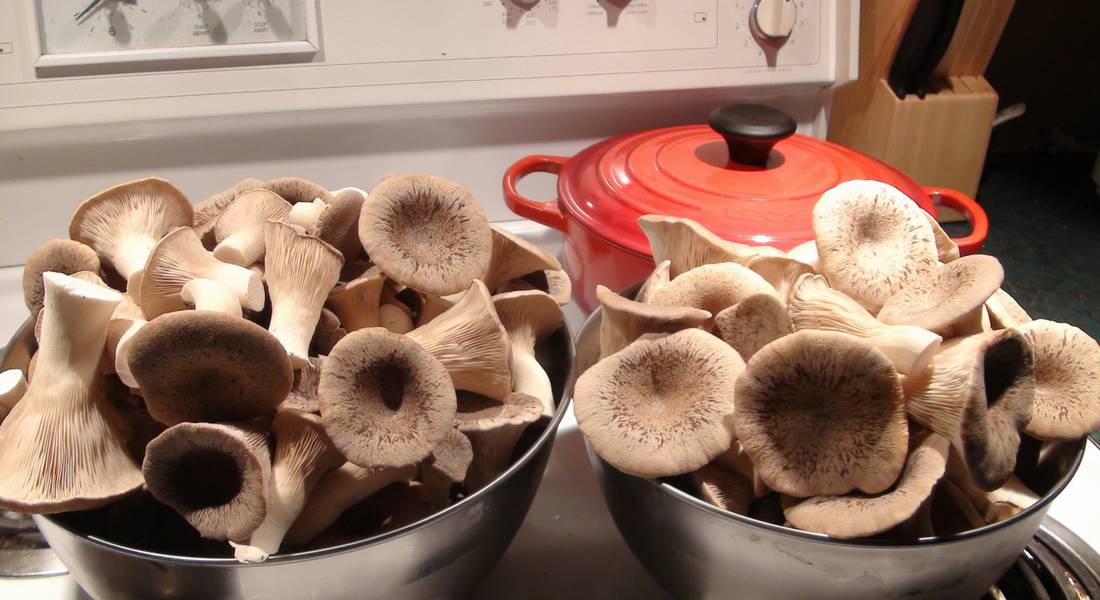
A nice harvest of King Oyster Mushrooms.
Expected Yields for Different Mushrooms
Different mushrooms, and different strains of the same species, will have a wide range of potential biological efficiencies. Typically, Oyster mushrooms which grow well on straw, such as Pearl Oysters and Blue Oysters have a high BE.
More delicate mushrooms, such as yellow oysters and slower growing mushrooms, such as Reishi, tend to have lower BE values.
Let’s look at some different mushrooms and their BE’s, and expected yields.
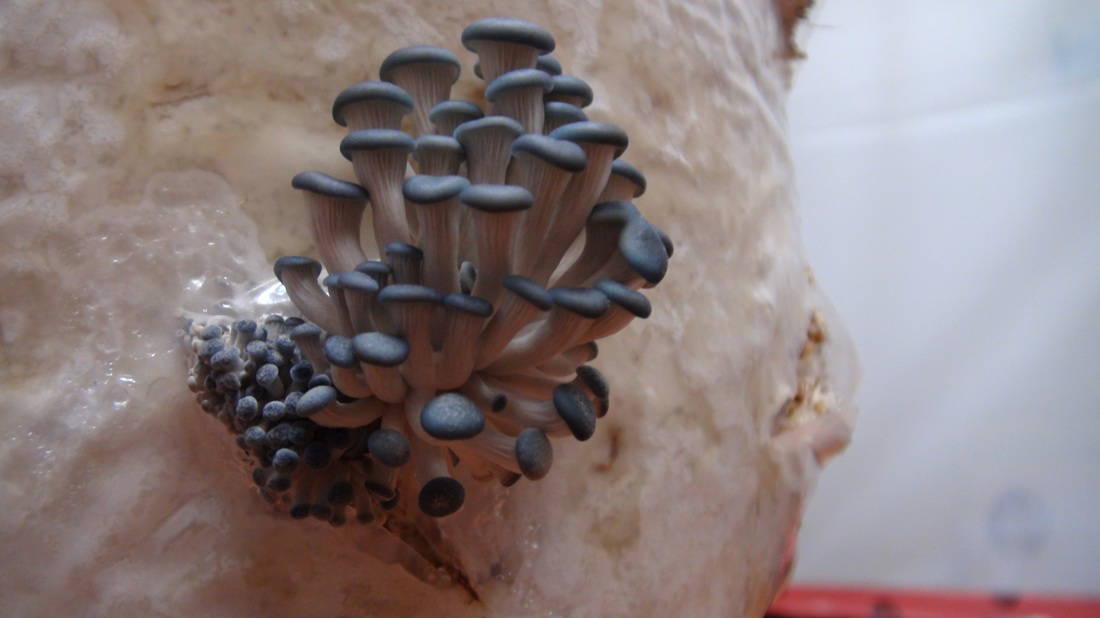
BLUE OYSTER
B.E.:100-200%
Yield: 6-12 lbs from a 25 lb straw log, up to 3 lbs from a 5 lb supplemented sawdust fruiting block.
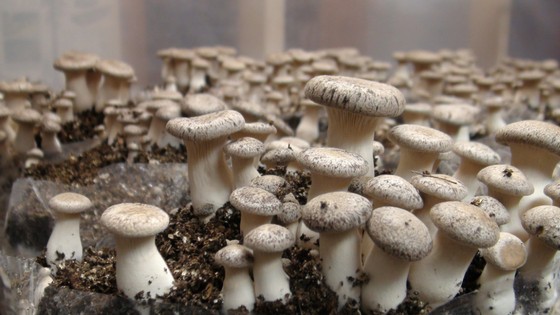
KING OYSTER
B.E.:100-150%
Yield: 6 – 8 lbs from a 25 lb straw log, up to 2.5 lbs from a supplemented sawdust fruiting block.
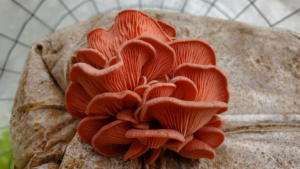
PINK OYSTER
B.E.:100-170%
Yield: 6-10 lbs from a 25 lb straw log, 2.5 lbs from a supplemented sawdust fruiting block.
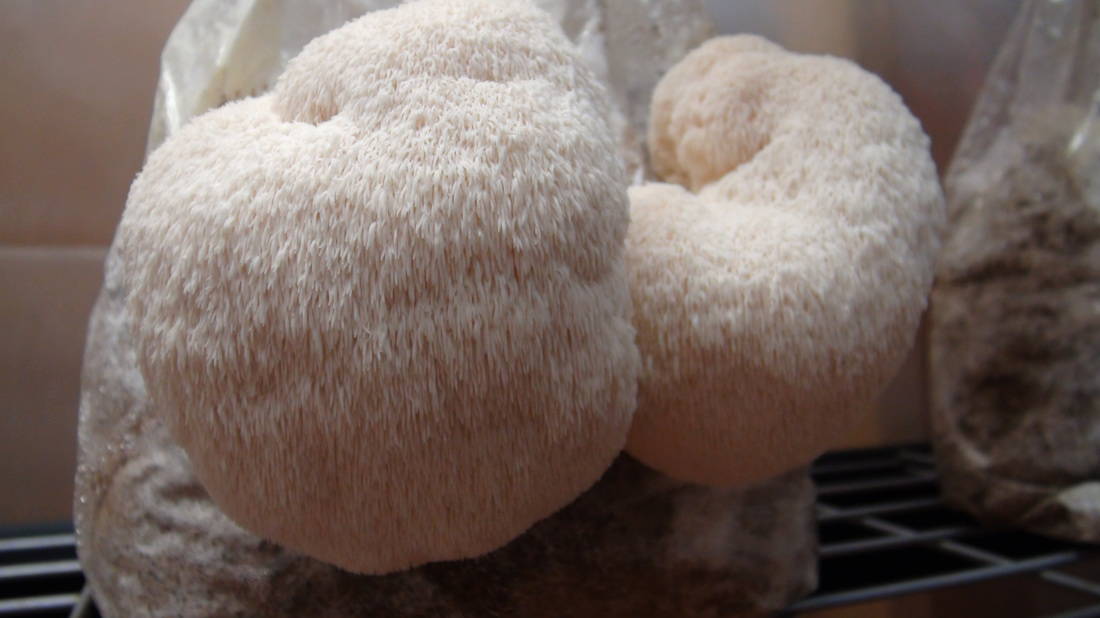
LIONS MANE
B.E.:90-140%
Yield:Up to 2.5 lbs from supplemented sawdust fruiting blocks.

REISHI
B.E.:80-120%
Yield:1.5-2 lbs on a supplemented sawdust fruiting block.
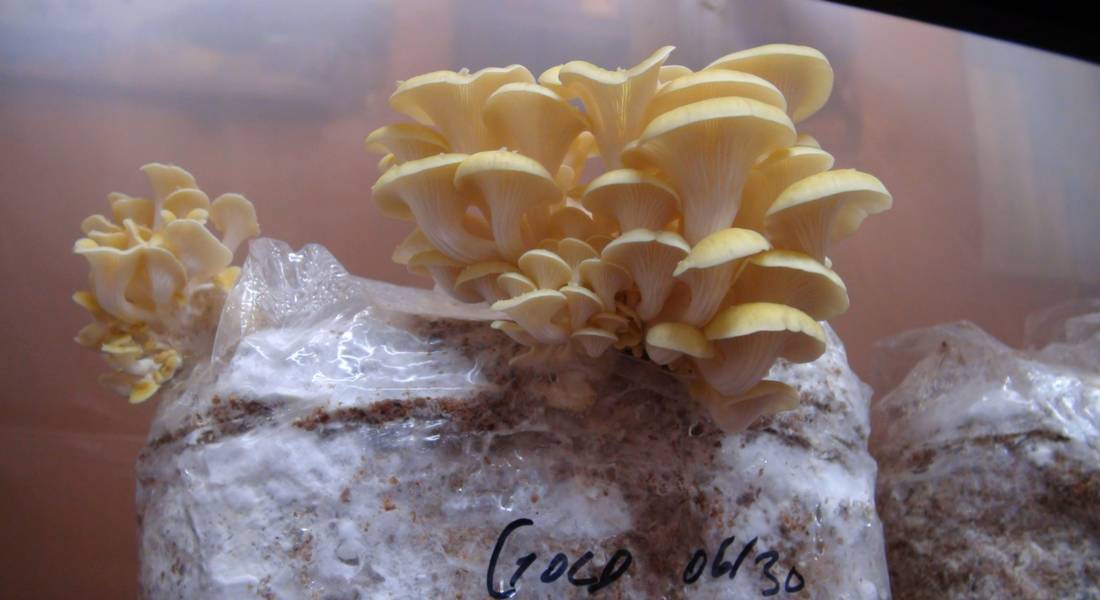
YELLOW OYSTER
B.E.:50-90%
Yield: 4-8 lbs from a 25 lbs fruiting block, up to 1.5 lbs from a supplemented sawdust fruiting block.
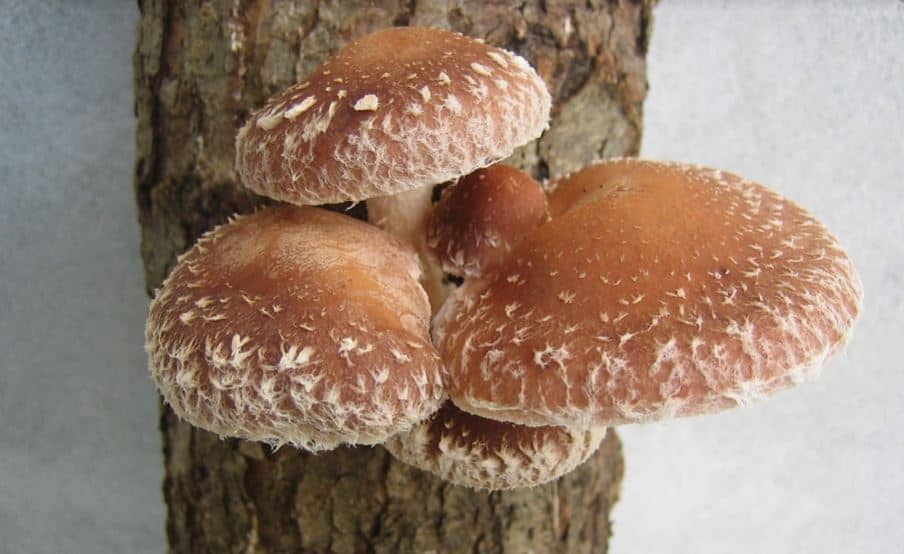
SHIITAKE
B.E.:100-200%
Yield:1.5-2.5 lbs on a supplemented sawdust fruiting block.
How to Increase Mushroom Yield
There are a number of different ways to increase your yield and make your mushroom harvest more fruitful, more efficient and more profitable.
1. Choosing a High Performing Strain
The strain you choose for your grow can have a huge impact on yield.
Different strains within the same species of mushrooms can produce vastly different results. Think for a second about the mushroom life-cycle. A mushroom culture starts when the hyphae of two compatible germinating spores mate and start to grow out as mycelium.
This means that when starting a grow from spores, there are untold gazillions of different possible combinations or “strains”, all with minute genetic differences that can have an impact on yield.
Luckily, top-performing strains have been carefully developed and optimized over the years to produce good and reliable yields. These strains are preserved as cultures, which are commercially available.
Of all the factors involved in trying to maximize yield, choosing a good producing commercial strain is probably the most important.
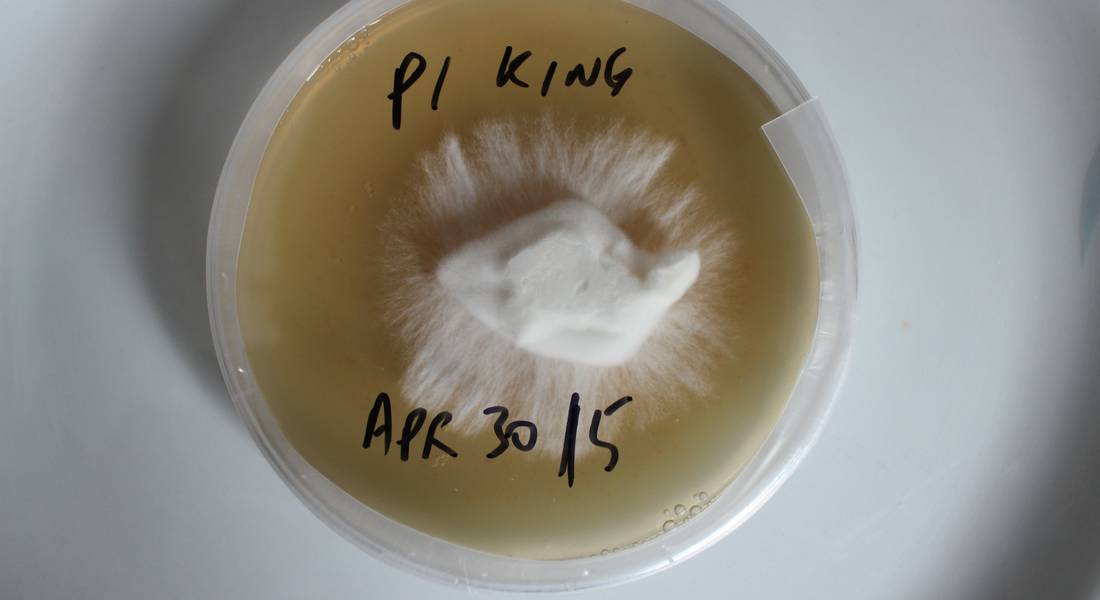
Different strains will have different yield characteristics.
2. Supplementation
Supplementation is the process of adding a nitrogen rich nutrient to the mushroom substrate in order to increase the potential yield. This works by providing the mycelium with a larger nutritional base in which to support stronger mycelium and produce larger, healthier fruits.
Supplementation is usually achieved by adding bran to the substrate, typically wheat bran or oat bran.
Adding too much supplementation, however, will actually have detrimental effects. With increased supplementation comes the increased probability of contamination, and thus diminishing returns on your yield.
Use supplementation carefully, starting small and increasing slowly to achieve optimum results.
In a way, increasing your spawn:bulk substrate ratio is a way to increase your nitrogen content, and is a form of supplementation. Again, too much spawn will eventually lead to diminishing returns. You need to find your sweet spot.
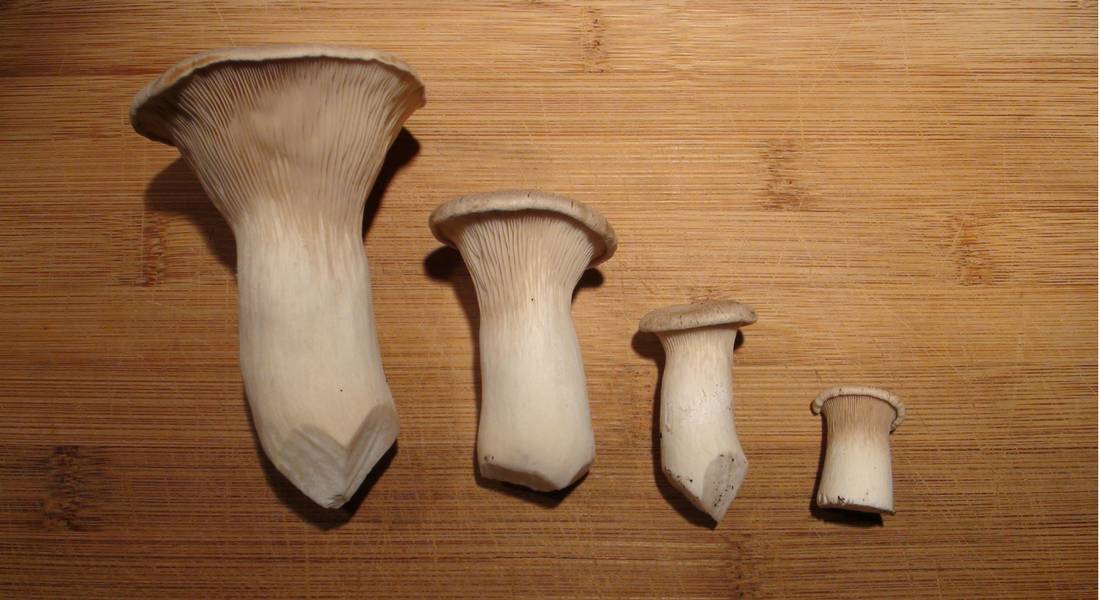
King Oyster Mushrooms harvested at different stages of growth.
3. Timing Your Harvest
When you choose to pick your mushrooms obviously has a huge effect on overall yield and biological efficiency.
Picking mushrooms when they are small, such as Agaricus species in the button stage, will decrease your BE. Picking mushrooms late will allow for a larger overall yield, but the quality of the mushrooms may be less due to the fruits being past their prime.
Every cultivator should be able to find the sweet spot for when to harvest their mushrooms in order to achieve the best yield for the desired quality. The right time to harvest mushrooms will depend highly on the species of mushrooms, and the different ways you plan to store your mushrooms before consumption.
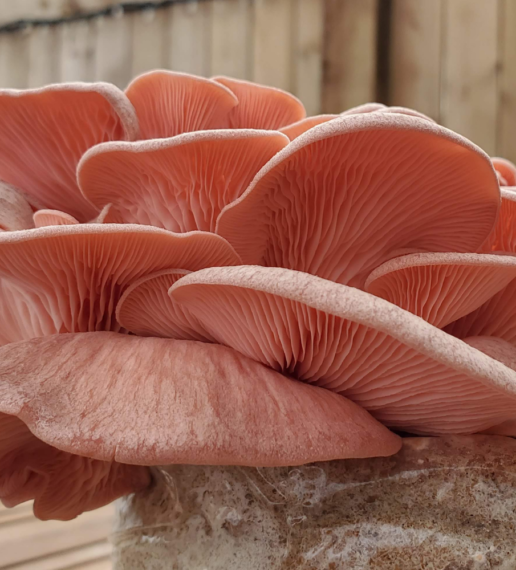
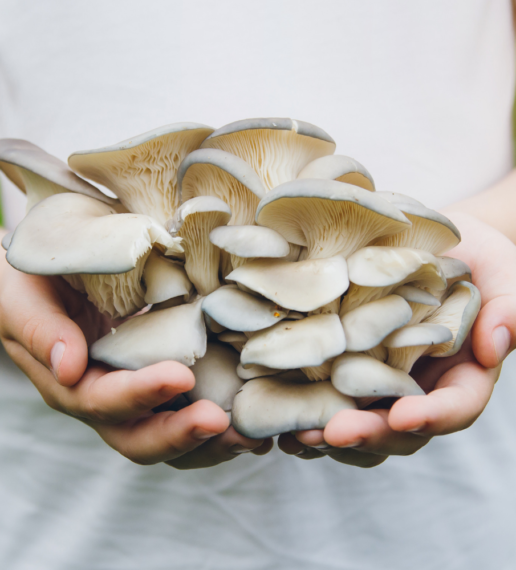
HiTony
The website is very informative.. Enjoyed it..
Just a quick question.. I just started button mushroom plant producing 2ton/day..
you know in 10kg of substrate we produce only 1.7 – 2kg ofmushroom (17-20%)
Do u have any tips/suggestions/ideas to improve the BE..
Thanks in advance for your help
Regards Thiru Jack
Hi Thiru!
Unfortunately, I don’t really have much experience with growing button mushrooms, although it is something I am definitely going to try. I would suggest trying to reach out to someone in that industry. I plan on visiting a button mushroom farm very soon, I will let you know if I get any insight.
All the best with your farm! 2 tons per day is a lot of mushrooms!
Hey! I have one question, because I’m curious about Blue Oyster’s efiiciency in 1st flush. Is 2kg of mushrooms from 15kg substrate any good in 1st flush? I think that is too low yield at all, we are doing 3 flushes and total yield is about 4kg from 15kg substrate. Should it be more than that? In my calculations that is about ~27% BE. Please, reply if you could! 🙂
Hey Matthew! Is that dry weight or wet weight for the substrate? If it’s wet weight than that yield isn’t bad at all!
Hi, did I hear you say hay is used as a substrate… You are an especially excellent experimenter and instructor. Human being too… Many blessings… Kpg
Thanks for the kind words! I use straw rather than hay. Straw is the “stalks” of grains like wheat and oats, whereas the hay is the rest of the plant material, dried out. Hay is likely too nutritious to use as a substrate without full sterilization.
its the seeds in the hay that cause the problems, they carry heat resistant endospores that germinate after pasteurization
There isnt any figure measure the the mushroom fruited, once to increase the moist of the mushroom, harvested weight increases..
On the other hand, commercially, substrate media will not let it fruit till the media has turn bad.
Practically, commercial growers are unable to use BE effectively
Do you sell any white button mushrooms extract or supplements?
Not at the moment, just THRIVE 6 (Chaga, Reishi, Turkey Tail, Maitake, Lion’s Mane and Cordyceps) Hero (pure Cordyceps Militaris), Electric (Pure Lions Mane) and RECHARGE (pure Chaga) Stay tuned though!
Hi Tony, thank you for doing what you are doing. It has already helped me so many times in understanding of cultivating mushrooms,
Good luck nad God bless
Hey Andri! Thanks so much, very glad that you like the site 🙂
Hi,
May you please name some of the effective suppliments to increase the BE Ratio of Ganoderma Lucidium…
Regards..
Priyanshu Kulshrestha
I don’t know of any specific to G. lucidum, but you could definitely play around with different amounts of bran (wheat, oat, rice) in a hardwood sawdust substrate, and see what works best.
Hey Tony – love you’re stuff and just bought some spawn last weeks. What’s the typical first flush BE you see (dry weight) for blue oyster and yellow oyster?
Hey Ben! You should be able to get 100% B.E. at least, but it definitely depends on substrate.
Hi when you talk about BE are you using dry or wet mushrooms?
dry
I want to try 2pounds of millet, oats and rye mixed. Then add one pound of water. Or would 1/2 pound of water and 1/2 pound of of coffee be better? I heard that the one pound of water and 2pounds of grain and go right into the PC without a soak works
Hi Tony, I have a little doubt. I have agar plate strain of oyster mushroom. Can I just replicate from that agar plate to many and again from many choosing one and replicating. Wil it decrease the yeild of my spawn??
Hi, thank you for this very informative blog!
I was wondering if you might be able to provide the BE’s for Cordyceps, Turkey Tail and Chaga?
Many thanks in advance